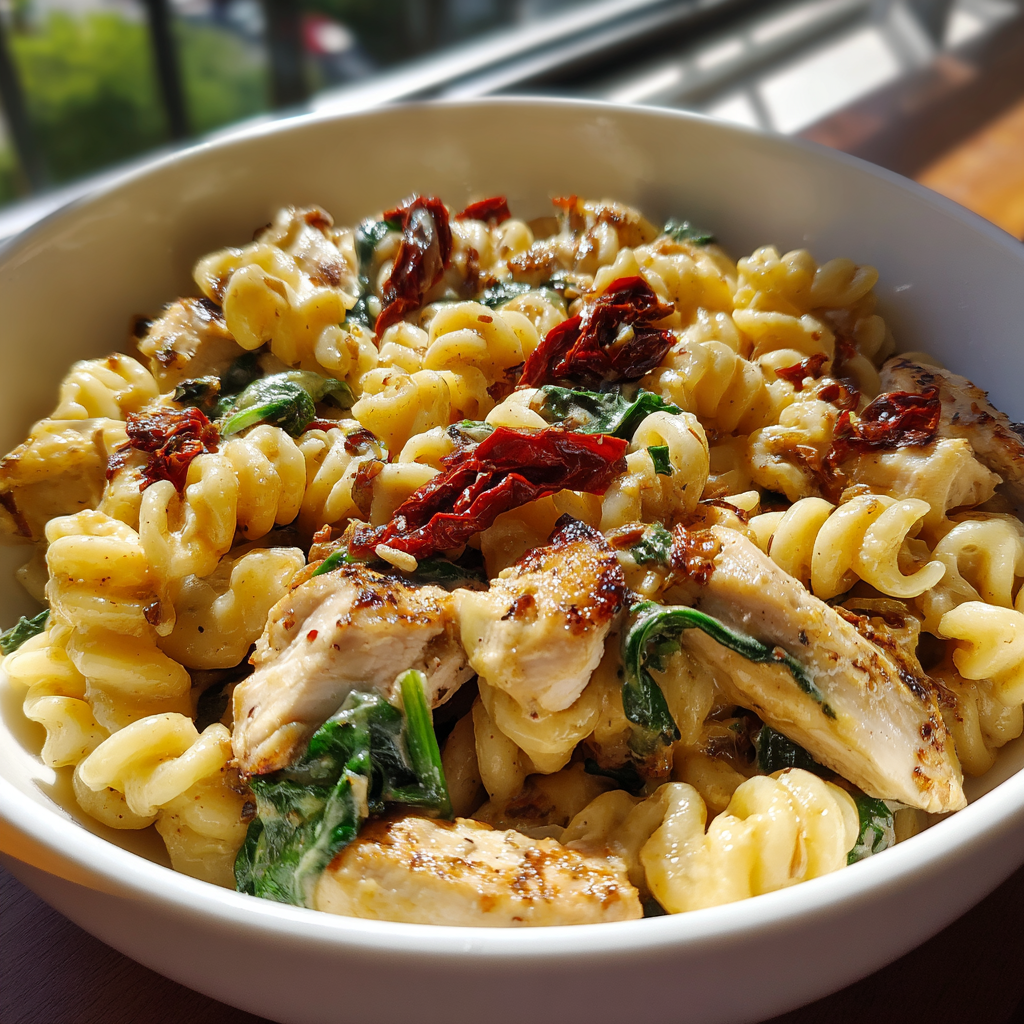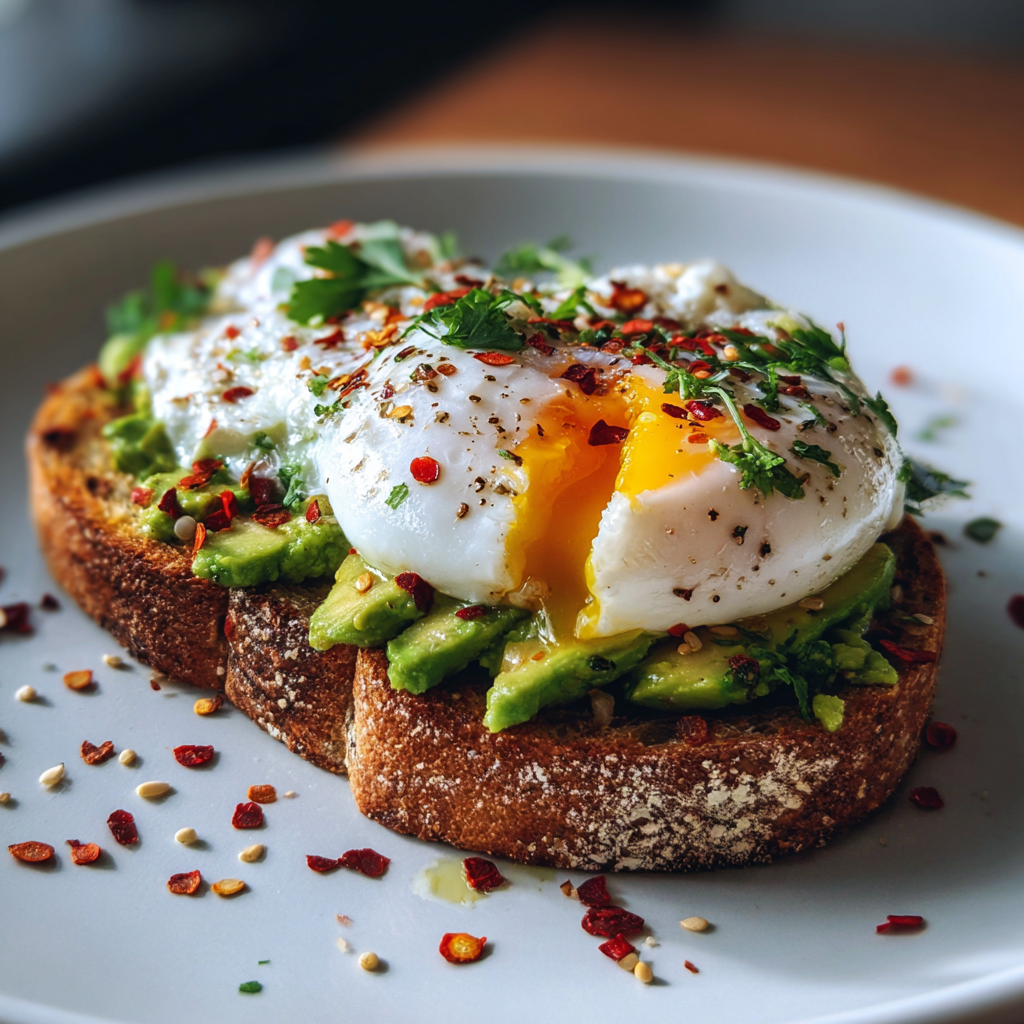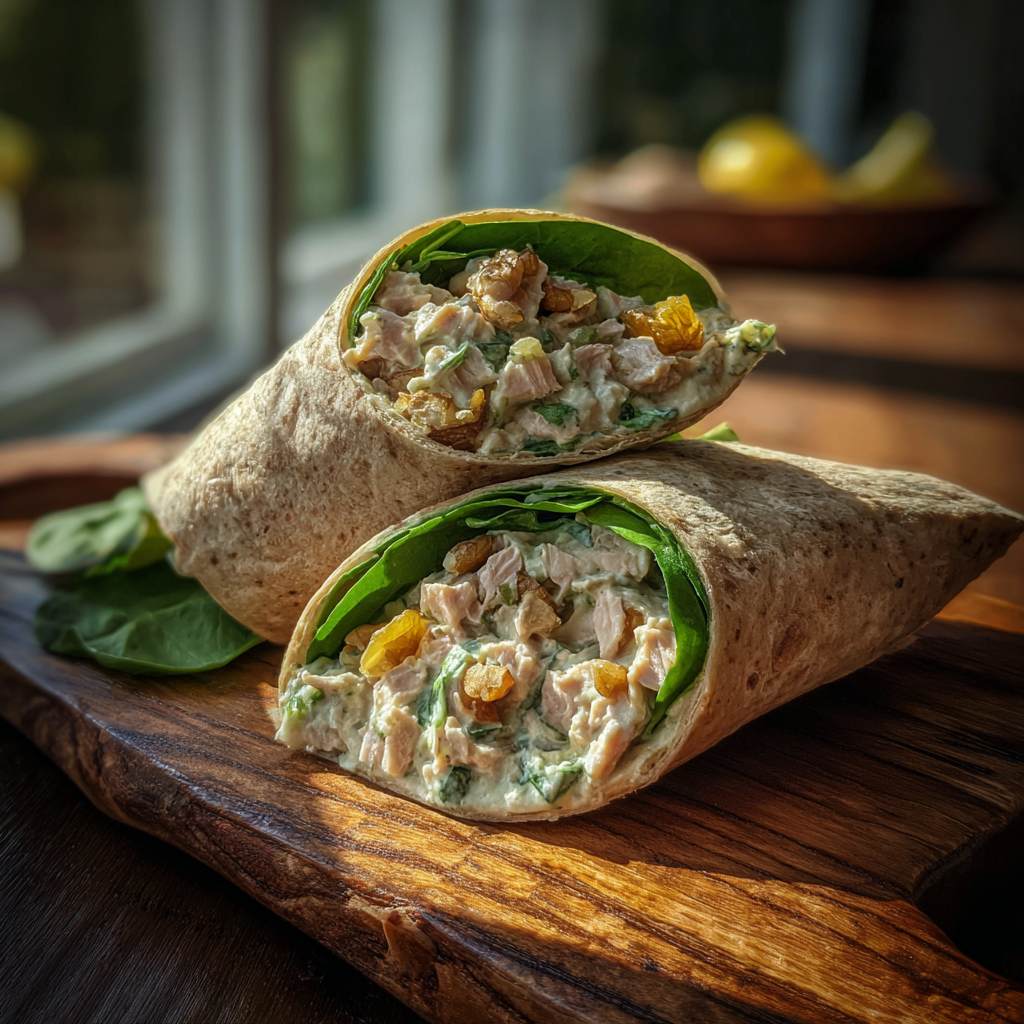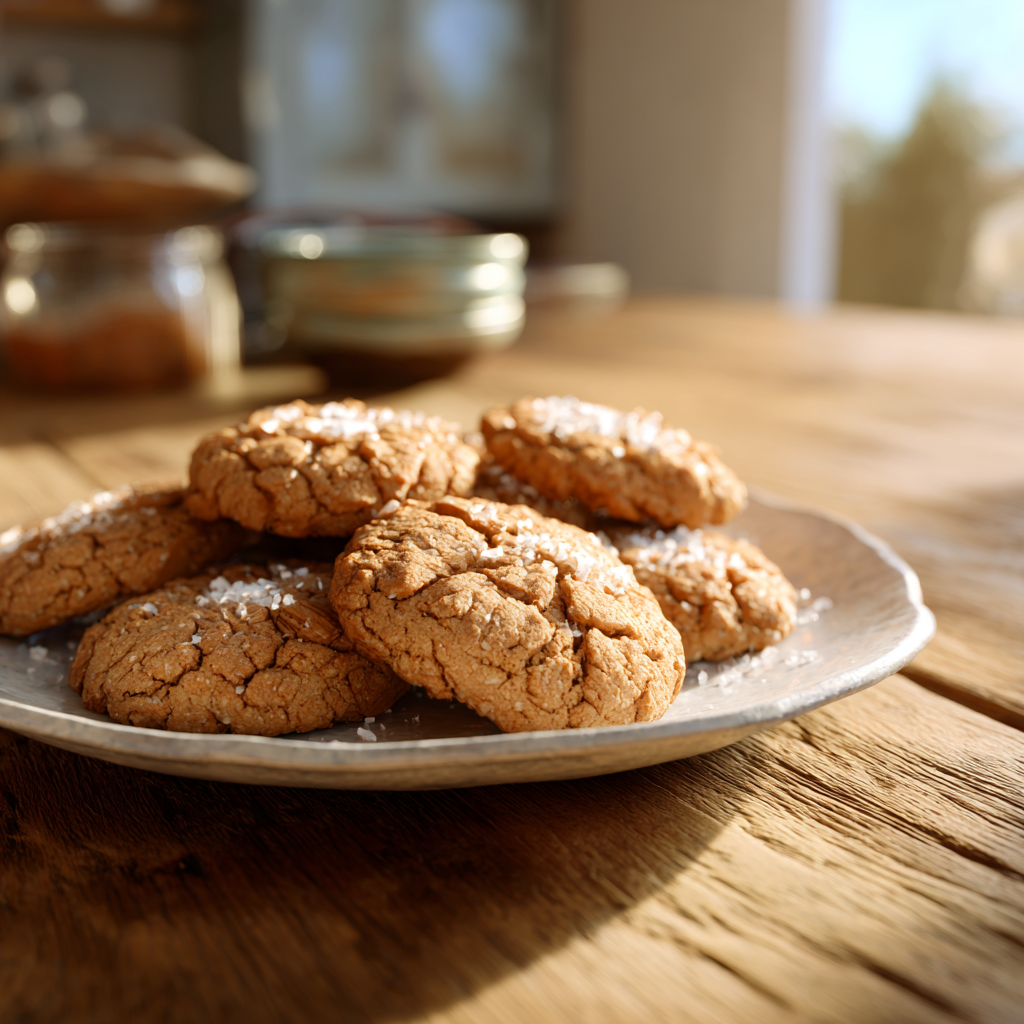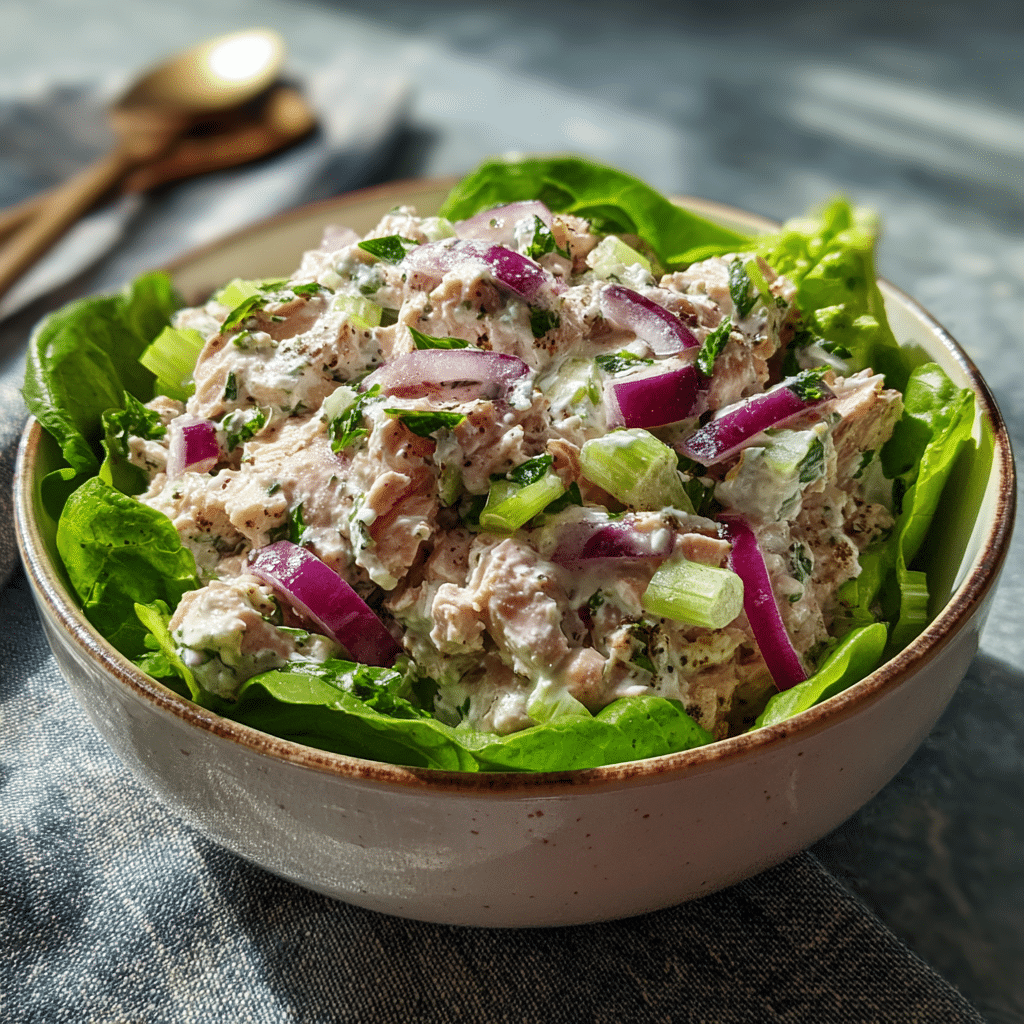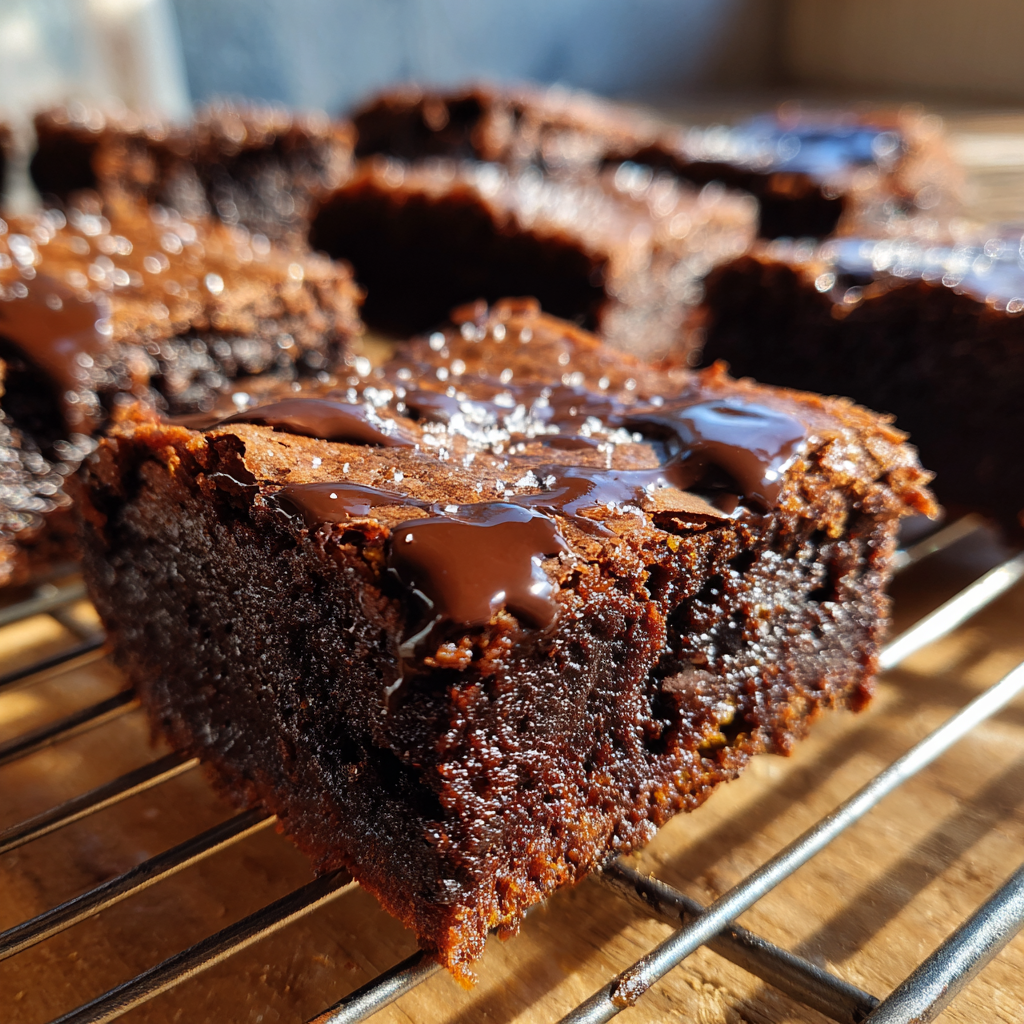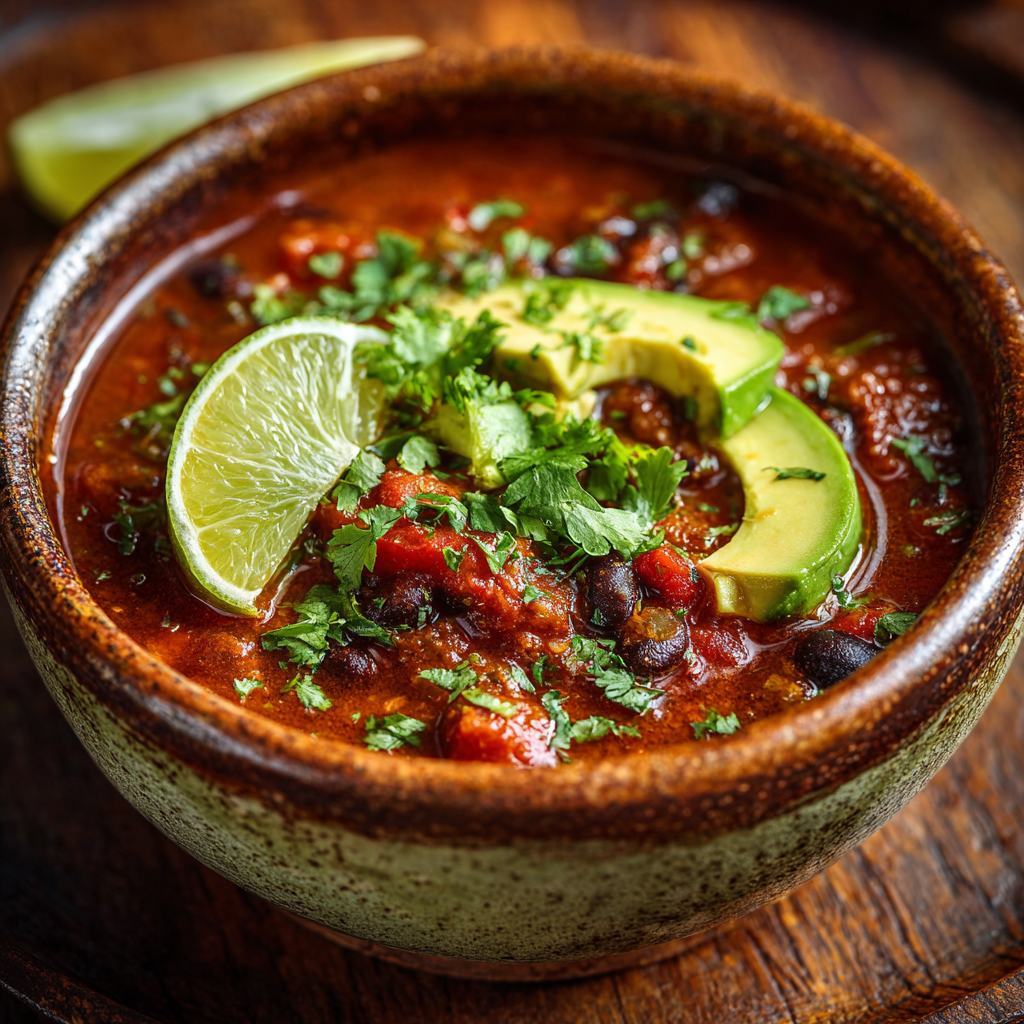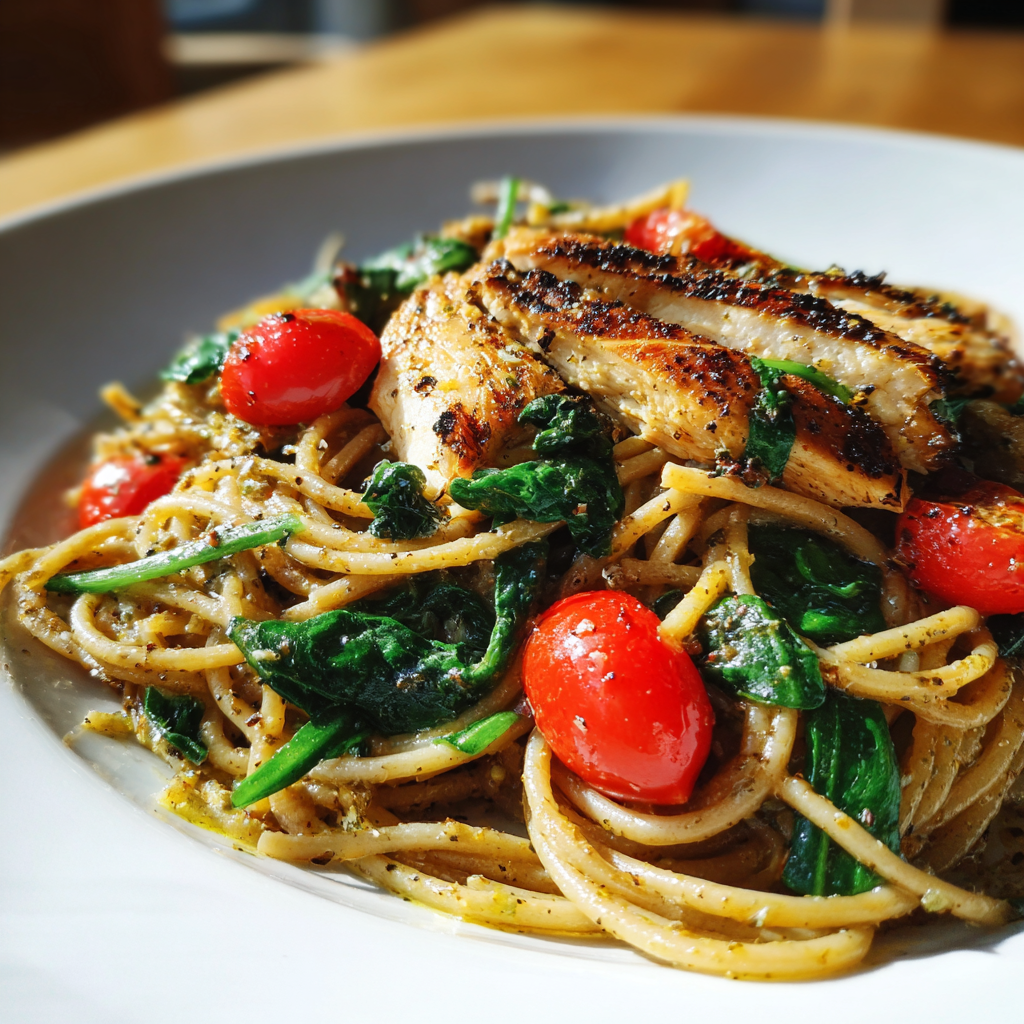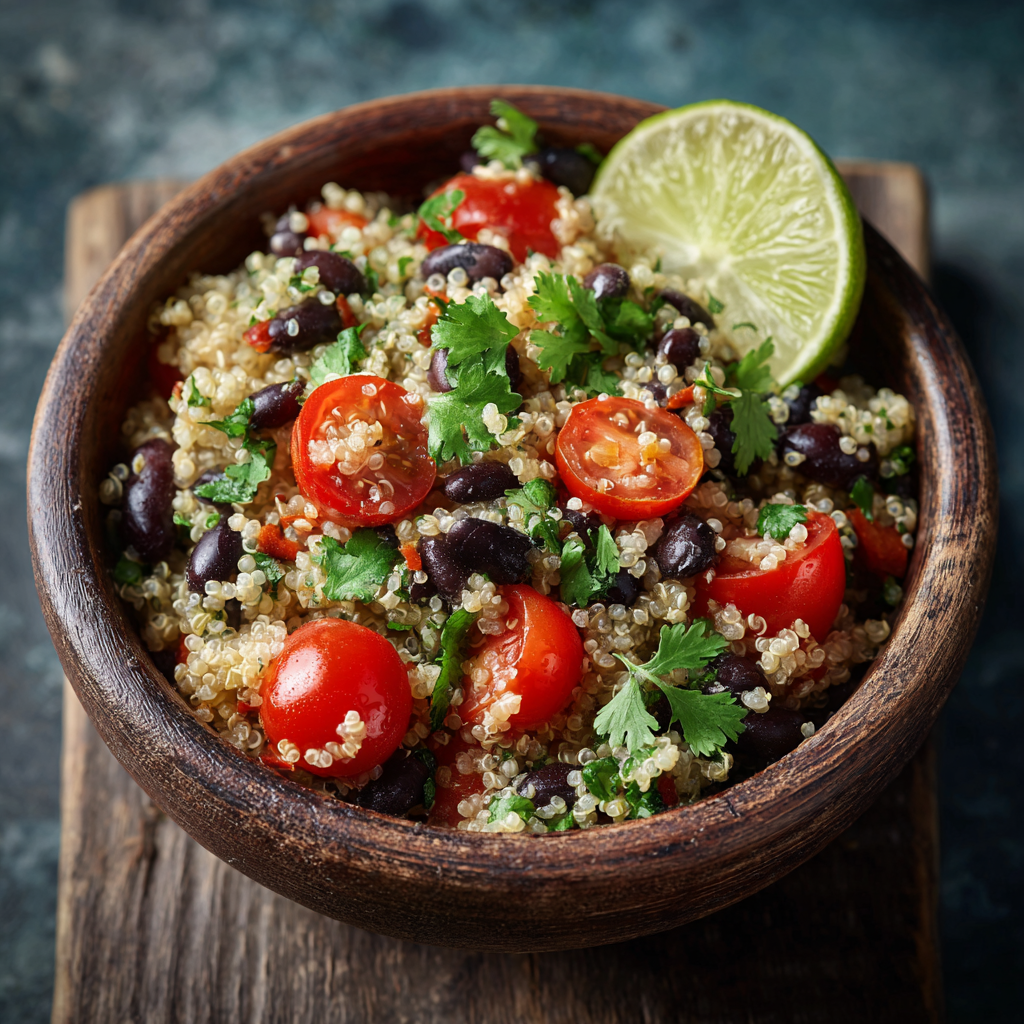Hibachi noodles recipe lovers, get ready—this quick, flavorful dish is buttery, garlicky, and full of bold Asian flair. Perfect with chicken or on its own, this hibachi noodles recipe takes just minutes to make. Craving takeout taste at home? This hibachi noodles recipe delivers every time.
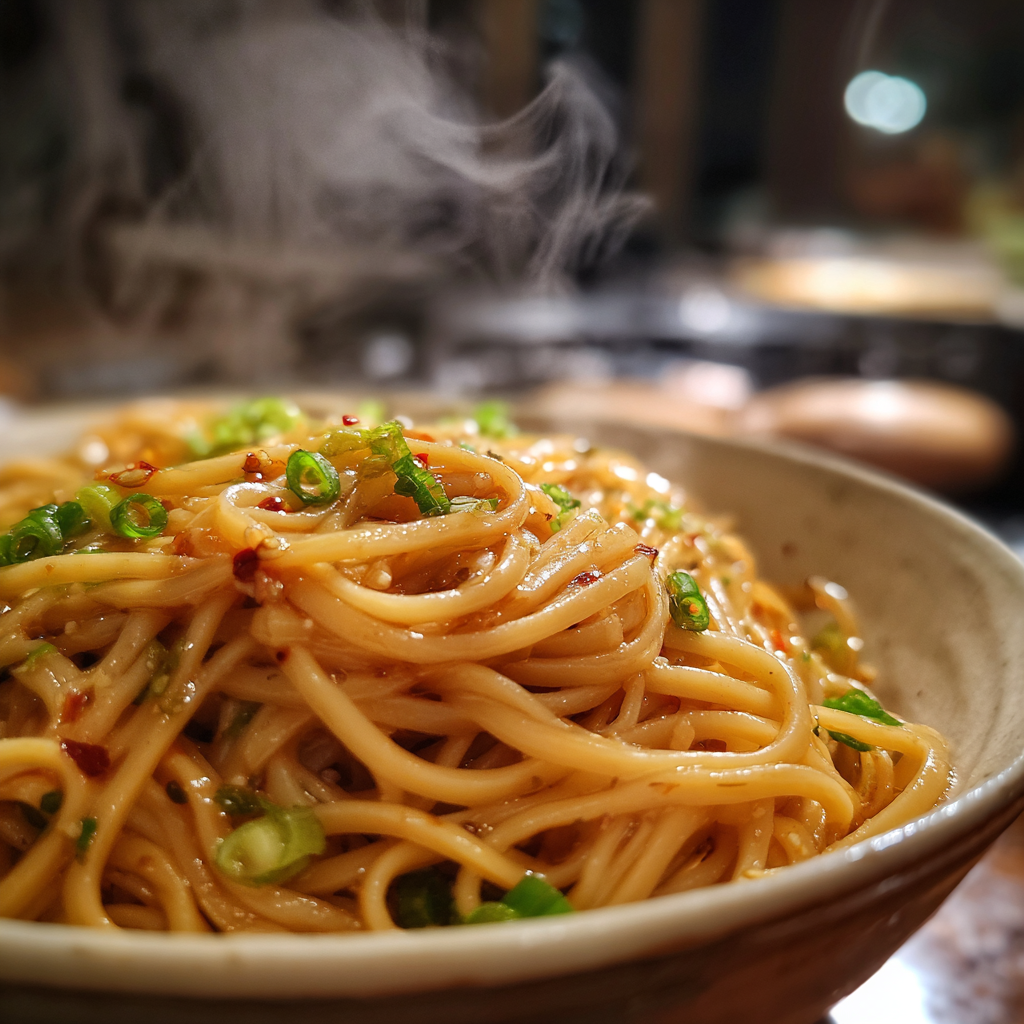
Table of Contents
Table of Contents
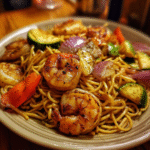
Hibachi Noodles Recipe
- Total Time: 15 minutes
- Yield: 2–3 servings 1x
Description
Ingredients
8 oz yakisoba noodles (or substitute with linguine, ramen, or udon)
2 tablespoons salted butter
2 garlic cloves, minced
1 teaspoon ginger paste (or 1/2 tsp grated fresh ginger)
3 tablespoons soy sauce (or tamari for gluten-free)
1 tablespoon brown sugar (or teriyaki sauce as sub)
1 teaspoon sesame oil
1 tablespoon lemon juice (or rice vinegar)
2 scallions, chopped for garnish
Instructions
Cook Noodles
Prepare the noodles according to package instructions. Rinse under cold water and drain well to prevent sticking.Sauté Aromatics
In a large non-stick skillet, melt butter over medium heat. Add minced garlic and ginger paste. Stir for 1–2 minutes until fragrant.Add Sauce Base
Stir in soy sauce and brown sugar. Let simmer for 2 minutes to allow the sauce to thicken slightly.Add Noodles
Toss in the cooked noodles. Use tongs to gently coat them evenly with the sauce mixture.Finish with Flavor
Drizzle in sesame oil and squeeze lemon juice over the top. Toss once more and remove from heat.Serve & Garnish
Plate the noodles and top with chopped scallions. Serve hot with optional sides like grilled chicken, shrimp, or stir-fried veggies.
Notes
Optional Add-Ins:
Grilled hibachi chicken or steak
Sautéed mushrooms, onions, or zucchini
A side of yum yum sauce for dipping
Storage Tips:
Refrigerate leftovers in an airtight container for up to 4 days.
Reheat in a skillet with a splash of soy sauce or water.
Not recommended for freezing (texture change).
- Prep Time: 5 minutes
- Cook Time: 10 minutes
- Cuisine: Japanese-Inspired
Nutrition
- Calories: 340 kcal
- Sugar: 6g
- Sodium: 950mg
- Fat: 14g
- Saturated Fat: 6g
- Carbohydrates: 46g
- Fiber: 2g
- Protein: 6g
- Cholesterol: 20mg
What Are Hibachi Noodles?
A hibachi noodles recipe is the secret behind those buttery, savory noodles you often enjoy at Japanese steakhouses. Unlike traditional ramen or soba, hibachi noodles are stir-fried with garlic, soy sauce, butter, and a touch of sesame oil to create rich, crave-worthy flavor. They’re typically cooked on a flat iron grill, but the beauty of this hibachi noodles recipe is that you can easily recreate it at home using a non-stick pan.
Originally made with yakisoba noodles—a soft, chewy Japanese noodle—this dish is highly adaptable. Can’t find yakisoba? No worries. This hibachi noodles recipe works great with ramen, udon, or even linguine, which absorbs sauces beautifully. It’s the perfect base for proteins like grilled chicken, steak, or shrimp, and it shines with simple sides like stir-fried veggies.
What sets this dish apart is its balance of bold and subtle. The garlic and ginger give it punch, while brown sugar adds just the right amount of sweetness. Together, they create a depth of flavor that’s unmistakably “hibachi.” This hibachi noodles recipe can stand alone as a weeknight dinner or be part of a larger Japanese-inspired spread.
In short, mastering a great hibachi noodles recipe means you never have to miss out on your favorite restaurant dish again. And when you get the texture and sauce just right, every bite brings that authentic hibachi grill taste straight to your table.
Ingredients Used in Authentic Hibachi Noodles
The magic of a great hibachi noodles recipe lies in its simple yet powerful ingredients. You don’t need a packed pantry—just a few staples that come together to create that unmistakable hibachi flavor.
First up, the noodles. While yakisoba is the classic choice, this hibachi noodles recipe is flexible. Can’t find them? No problem—use ramen, udon, or even linguine. They all soak up that garlic butter sauce like a dream.
Butter is a must. It adds richness and helps all the other ingredients stick to the noodles. When melted with fresh garlic and a bit of ginger paste, it builds the flavor foundation for this hibachi noodles recipe. That mix of savory, spicy, and slightly sweet is what hibachi is all about.
Soy sauce adds depth and umami, while brown sugar gives a hint of sweetness to balance it out. A dash of sesame oil brings in that toasty aroma hibachi dishes are known for. You’ll also want scallions for a pop of color and crunch.
The best part? These ingredients are easy to find. Most are already in your kitchen, making this hibachi noodles recipe not only delicious but also incredibly convenient.
If you’ve been hunting for the right flavor combo to mimic restaurant-style noodles, this hibachi noodles recipe delivers. It’s buttery, garlicky, and packed with crave-worthy taste—exactly what you need for a quick, satisfying meal at home.
Types of Noodles for Hibachi Dishes
When it comes to crafting the perfect hibachi noodles recipe, choosing the right noodles is key. The classic option? Yakisoba—Japanese wheat noodles with a soft, chewy texture that holds up well to stir-frying and sauces. But if you can’t find them locally, don’t stress. This hibachi noodles recipe is all about flexibility.
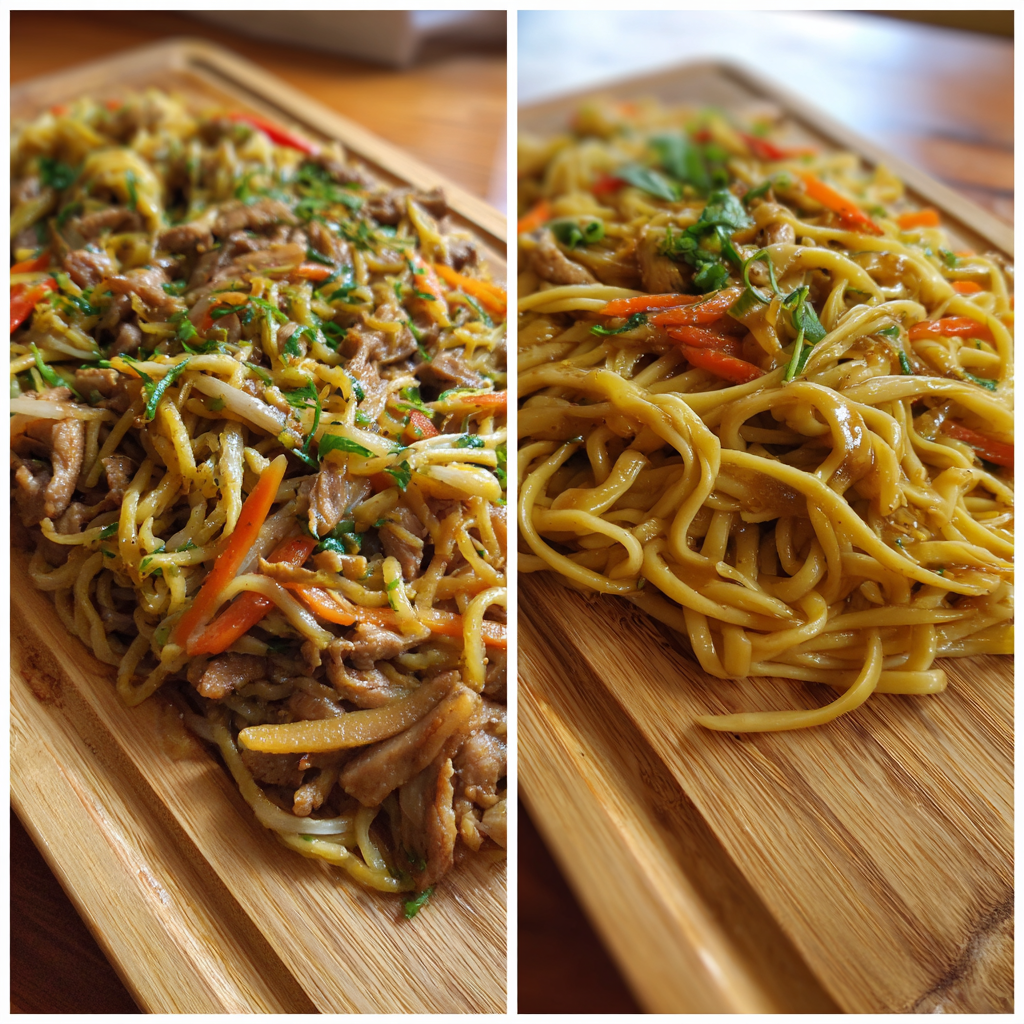
Ramen noodles, often associated with soup, are another solid option. Their springy bite works surprisingly well in a stir-fry. Udon noodles, thicker and chewier, are also excellent for soaking up bold sauces. Even linguine or spaghetti, while not traditional, make great stand-ins for a homemade hibachi noodles recipe when you’re short on time or ingredients.
The key is to select noodles that are soft enough to absorb the sauce, yet sturdy enough not to fall apart during tossing. This hibachi noodles recipe thrives on noodles that carry flavor, not fight it.
If you’re gluten-free, rice noodles or soba made from 100% buckwheat flour can be great alternatives. Just keep in mind they cook faster and may require more gentle handling when mixing with sauce.
At the end of the day, the noodles in your hibachi noodles recipe should be accessible, easy to cook, and delicious. Whether you go authentic or adapt with pantry staples, your choice of noodle will still yield restaurant-quality results.
And that’s the beauty of a well-crafted hibachi noodles recipe—it adapts to you.
Best Sauce for Hibachi Noodles
The soul of any hibachi noodles recipe lies in the sauce. It’s where all the flavor magic happens—rich, buttery, salty, sweet, and a little smoky. When done right, this sauce turns simple noodles into a crave-worthy dish that tastes just like your favorite Japanese steakhouse.
The classic hibachi sauce is a mix of soy sauce, garlic, sesame oil, and butter. In many cases, a touch of brown sugar is added to round out the flavor and create that irresistible sweet-savory balance. Some versions of the hibachi noodles recipe may even use teriyaki-style sauces or soy glazes to deepen the umami flavor.
To make it at home, start by melting butter in a hot pan. Add minced garlic and a little ginger, letting the aromatics sizzle. Next, pour in the soy sauce and stir in a bit of brown sugar. Let it reduce slightly to thicken and concentrate the flavor.
For a restaurant-style touch, finish your hibachi noodles recipe with a drizzle of sesame oil and a splash of lemon juice. This combination adds complexity and brightness to the dish.
Some fans of this hibachi noodles recipe also like to serve it alongside yum yum sauce for dipping or drizzling. While not traditional, it gives the dish that creamy tang some people love.
No matter how you sauce it, a great hibachi noodles recipe delivers bold, balanced flavor in every bite—and it’s shockingly easy to master in your own kitchen.
Seasoning Secrets for Flavorful Hibachi Noodles
Seasoning is everything when it comes to the perfect hibachi noodles recipe. What gives these noodles their signature flavor is the smart layering of simple ingredients—each one building on the last to create deep, umami-rich taste.
Garlic is a must. Freshly minced garlic sautéed in butter creates the bold base for any good hibachi noodles recipe. Add ginger to that mix and you introduce a sharp, zesty note that elevates the entire dish. These two together are non-negotiable in authentic hibachi flavor.
Next comes the soy sauce—one of the essential umami boosters. It’s salty, savory, and helps balance the buttery richness. Sesame oil, though used sparingly, offers that nutty aroma that makes your hibachi noodles recipe smell and taste like it came off a sizzling grill.
Brown sugar or a pinch of white sugar is often added to bring a hint of sweetness. This is crucial for rounding out the sharp edges of the other seasonings and creating the smooth, crave-worthy finish found in any restaurant-style hibachi noodles recipe.
Some recipes also call for a dash of pepper or even a bit of chili flake to add gentle heat. But the beauty of this hibachi noodles recipe is that it’s totally customizable—you can go spicy, mild, bold, or balanced.
With the right combination of spices and sauces, this hibachi noodles recipe hits every flavor note, making it a reliable, crowd-pleasing side or main dish every time.
How to Cook Hibachi Noodles at Home
Making a hibachi noodles recipe at home is easier than you think. You don’t need a full hibachi grill setup—just a non-stick skillet, a handful of pantry staples, and about 15 minutes. This homemade hibachi noodles recipe brings restaurant-quality results with minimal effort.
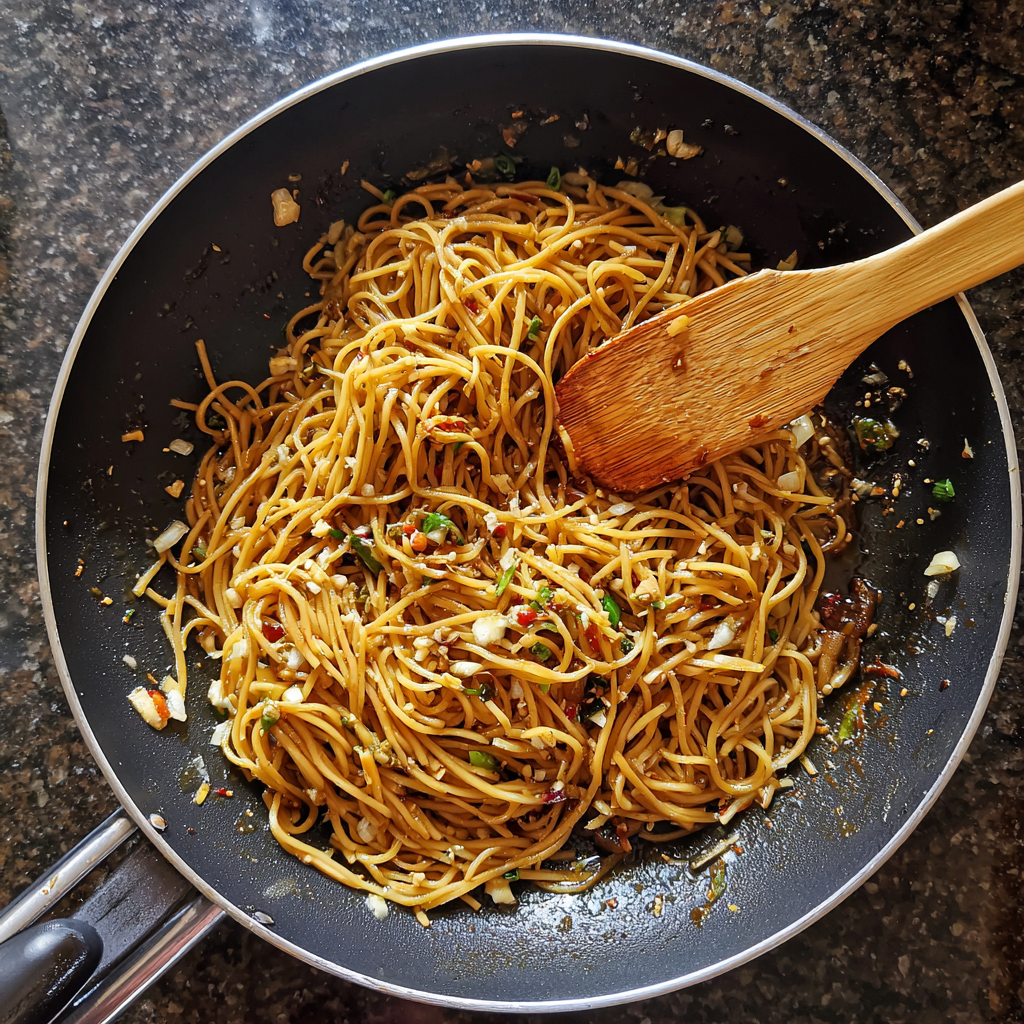
Start by boiling your noodles according to the package directions. Whether you’re using yakisoba, udon, ramen, or linguine, make sure they’re al dente. Once cooked, rinse them under cold water to stop the cooking process and prevent sticking—this step is key for a smooth hibachi noodles recipe.
Next, heat your pan over medium-high heat and melt butter. Add garlic and ginger, stirring until fragrant. At this point, your kitchen will already smell like a hibachi grill.
Add soy sauce, a touch of brown sugar, and a splash of water or broth to create your base sauce. Let it simmer briefly to thicken into a teriyaki-style glaze. Then toss in the noodles and gently stir to coat every strand with flavor.
To finish your hibachi noodles recipe, drizzle a bit of sesame oil for depth and toss in some chopped scallions for freshness. If desired, add grilled chicken, shrimp, or sautéed veggies to make it a full meal.
This stovetop-friendly hibachi noodles recipe is proof that you don’t need fancy tools to enjoy bold, Japanese-style flavors at home. Quick, customizable, and incredibly satisfying, it’s a go-to for weeknights or lazy weekends.
Best Sauce for Japanese Noodles Overall
When you explore Japanese cuisine, you’ll find a world of noodle sauces. But for the best flavor with a hibachi noodles recipe, certain sauces stand out more than others. The go-to option? A classic garlic butter soy glaze—simple, bold, and full of umami.
Teriyaki sauce is a top contender. It’s sweet, salty, and perfect for adding depth to any hibachi noodles recipe. The glaze wraps around the noodles, coating them in a glossy, crave-worthy sheen. It really shines alongside grilled meats or charred veggies, making every bite more dynamic.
Another flavorful pick is miso-based sauce. A miso glaze can give your hibachi noodles recipe a rich, fermented flavor that adds complexity without overpowering the dish. It complements mushrooms or tofu beautifully, adding an earthy depth and a touch of sweetness to every bite.
If you’re after something creamy, yum yum sauce is a popular choice in hibachi restaurants. While not traditional in Japan, it adds a tangy, mayo-like richness that contrasts nicely with stir-fried noodles. Drizzle it on top of your hibachi noodles recipe or serve it on the side as a dipping sauce.
You can also experiment with spicy stir-fry sauces or chili garlic blends for an extra kick. The beauty of a good hibachi noodles recipe is its versatility—it welcomes bold flavors without losing its identity.
No matter your preference, the sauce you choose will define the final taste. So, pick one that complements your mood and the rest of your meal—and let your hibachi noodles recipe shine.
Pairing Suggestions: What Goes Well With Hibachi Noodles
A good hibachi noodles recipe is satisfying on its own, but pairing it with the right sides can elevate it to a full hibachi-style experience. Whether you’re building a full Japanese dinner or just looking to round out a weeknight meal, the options are tasty and flexible.
Start with protein. Hibachi chicken is the classic choice—lightly seasoned, seared to perfection, and juicy. Grilled shrimp is another crowd favorite and adds a seafood flair that complements the hibachi noodles recipe beautifully. Steak or tofu also work well, depending on your preferences.
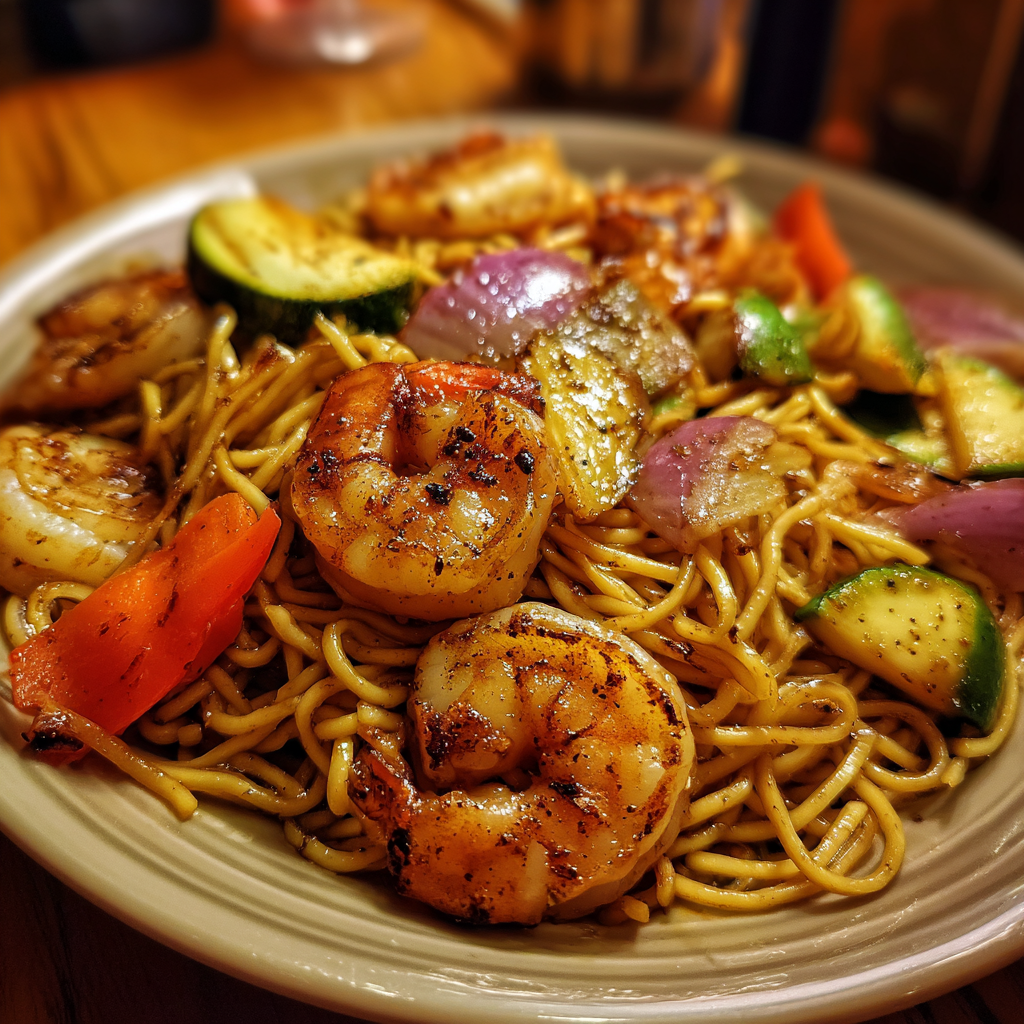
Need a side? Stir-fried vegetables are a perfect match. Think zucchini, mushrooms, onions, and carrots sautéed in soy and sesame oil. Their crisp texture contrasts perfectly with the soft, saucy noodles in your hibachi noodles recipe.
Rice dishes like garlic fried rice or simple jasmine rice can help round out the meal. They soak up extra sauce and make the entire dish feel more substantial. Add a side of miso soup or a light Japanese salad with ginger dressing for restaurant-style balance.
For dipping, don’t forget the sauces. Yum yum sauce, spicy mayo, or even a simple soy-ginger dip pairs well with the flavors in this hibachi noodles recipe.
The great thing about a versatile hibachi noodles recipe is that it fits into any meal—whether you’re keeping it light with veggies or going all out with multiple mains and sides, you really can’t go wrong.
Tips, Substitutions & Storing
One of the best parts about this hibachi noodles recipe is how easy it is to adjust, store, and reheat without sacrificing flavor. Whether you’re swapping ingredients or prepping ahead, it’s a dish built for flexibility.
Need a gluten-free version? Swap soy sauce for tamari and use rice noodles or gluten-free pasta. You’ll still get the same great flavor in your hibachi noodles recipe with a few easy changes.
Dairy-free? Just use a plant-based butter substitute. The buttery richness still comes through, especially when combined with garlic and sesame oil.
If you’re running low on ingredients, no problem. Can’t find yakisoba noodles? Linguine, spaghetti, or udon all work great. Out of brown sugar? A splash of teriyaki sauce adds the same sweet depth in your hibachi noodles recipe.
This dish is also ideal for meal prep. Store leftover hibachi noodles recipe in an airtight container in the fridge for up to 4 days. To reheat, just toss them in a skillet with a splash of water or soy sauce until warmed through.
You can also freeze it, though fresh is always best. If freezing, divide your hibachi noodles recipe into single portions for easier reheating.
And don’t forget to taste and tweak as you go. Add more soy sauce, sprinkle on scallions, or drizzle sesame oil at the end—small touches make a big difference in any hibachi noodles recipe.
Whether fresh or leftover, this recipe proves comfort food can also be practical.
Conclusion: Make the Hibachi Noodles Recipe Your Own
This easy, flavor-packed hibachi noodles recipe proves that you don’t need a flat-top grill or restaurant setup to enjoy authentic Japanese flavors at home. With just a few pantry staples—like garlic, soy sauce, and sesame oil—you can whip up a buttery, umami-rich noodle dish that rivals your favorite takeout.
Whether you use traditional yakisoba, ramen, or pantry linguine, the flexibility of this hibachi noodles recipe makes it perfect for busy weeknights, family dinners, or even meal prep. Pair it with hibachi chicken, grilled shrimp, or sautéed veggies, and you’ve got yourself a full Japanese-inspired plate.
Looking for more flavor-packed comfort dishes?
Discover great ideas like our churro cheesecake recipe for dessert indulgence.
Check out this Kodiak pancake recipe for a protein-packed breakfast option.
Don’t miss our homepage for more easy recipes and kitchen inspiration.
Looking for inspiration? Try browsing our orphan pages like the Kodiak pancake recipe and homepage to boost their visibility.
Now that you’ve got the tools, flavor tips, and foolproof steps, your next hibachi noodles recipe night is sure to impress. Fire up the skillet and make it happen!
For mor recipes follow me in instagram and facebook.
FAQs about hibachi noodles recipe
What kind of noodles are used in hibachi?
Traditionally, hibachi chefs use yakisoba noodles—a Japanese wheat noodle that’s slightly chewy and ideal for stir-frying. If you can’t find yakisoba, this hibachi noodles recipe also works well with ramen, udon, or even spaghetti. The key is choosing noodles that hold up to sauce and high heat.
What seasoning do they use for hibachi?
A classic hibachi flavor comes from a blend of soy sauce, garlic, sesame oil, and butter. Ginger and brown sugar often enhance the flavor. In this hibachi noodles recipe, these pantry-friendly ingredients create the bold, salty, and slightly sweet profile hibachi dishes are known for.
What is the sauce they put on hibachi?
Most hibachi-style noodles are tossed in a teriyaki-style glaze made with soy sauce, butter, garlic, and sugar. Sometimes chefs finish with sesame oil or a lemon squeeze for brightness. This hibachi noodles recipe follows that same formula to deliver authentic, savory results.
What is the best sauce for Japanese noodles?
Teriyaki, miso glaze, and soy-based sauces are top choices. Yum Yum sauce, though not traditional, is a creamy favorite in hibachi-style meals. This hibachi noodles recipe pairs well with all three, depending on your taste and the protein or sides you serve it with.

